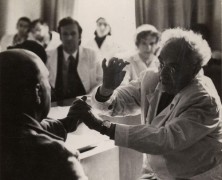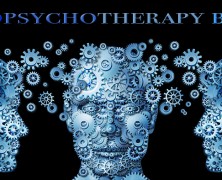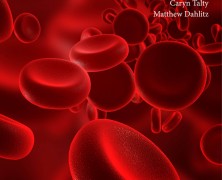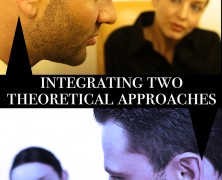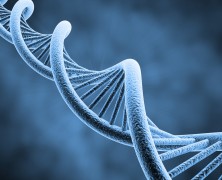Alexander Luria: Life, research & contribution to neuroscience Maria Ilmarovna Kostyanaya The University of Queensland Pieter Rossouw School of Psychology, School of Social Work and Human Services The University of Queensland Alexander Luria – life, research and contribution to...
Pleasure Maximisatio...
posted by Matthew Dahlitz
Pleasure Maximisation and Distress Avoidance Over the past three blogs in this series on Neuropsychotherapy Basics, we have looked at the basic psychological needs of attachment, control, and self-esteem enhancement. Now we turn our attention to the forth basic need in the consistency...
Wired to Connect
posted by Mona Fishbane
Wired to Connect Mona Fishbane Humans are social animals. Our species developed in social groups; it has been suggested that our relatively big brains evolved to cope with the vast amount of information we need to process our interactions with others. Furthermore, in early human...
Integrating Selected...
posted by Arlene Montgomery
Integrating Selected Neurobiological Concepts into the Supervisory Process Arlene Montgomery In preceding chapters of Arlene Montgomery’s Neurobiology Essentials for Clinicians (Montgomery, 2013), selected foundational concepts were described and illustrated with case material....
Pyrrole Disorder for...
posted by Matthew Dahlitz
Pyrrole Disorder For Therapists Caryn Talty & Matthew Dahlitz DOI: 10.12744/tnpt(3)058-066 Moody. That’s the word loved ones, friends, and co-workers usually use to describe the person in their life suffering from untreated pyrrole disorder. Everyone walks on eggshells whenever...
Behavioral Epigeneti...
posted by Jonathan Baylin
Behavioral Epigenetics and Attachment Jonathan Baylin DOI: 10.12744/tnpt(3)068-079 One of the hottest areas of neuroscience is the study of how life experience affects patterns of gene expression in the brain, what some call behavioral epigenetics (Weaver, 2004; McEwen, 2012). Of great...
Integrating Two Theo...
posted by Matthew Dahlitz
Integrating Two Theoretical Approaches Matthew Dahlitz DOI: 10.12744/tnpt(3)080-089 A typical depression case is conceptualised and analysed from the perspectives of neuropsychotherapy, an integrative meta-framework of understanding psychopathology from a neural perspective, and coherence...
The Neuroscience of ...
posted by Lou Cozolino
The Neuroscience of Psychotherapy Interview with Louis Cozolino David Van Nuys DOI: 10.12744/tnpt(3)090-100 David Van Nuys interviews Louis Cozolino on the neuroscience of psychotherapy. Unable to download? You are probably not logged in. Click on Members Login to have access to all...
Bilingualism encoura...
posted by Tina Pentland
Bilingualism Encourages Mental Agility Tina Pentland: News Editor An active brain is a healthy brain. This is the message to be learned from recent studies of advanced bilinguals who use a different kind of mental process, called “parallel activation”, to access a word in two languages...
The Neuropsychotherapist eMagazine Issue #3
posted by NPT
THE NEUROPSYCHOTHERAPIST Issue #3 (October-December 2013) ISSN 2201-9529 The Neuropsychotherapist Members Only content MEMBERS: Be sure you are logged in to see your viewing options Members Login Not a member? Click on Subscription to find out more. CONTENTS Welcome to the third edition of The Neuropsychotherapist. What an amazing time we live in! Space, it seems, was not the final frontier after all. Across the board, scientific knowledge has been advancing at near warp speed, and attempting to keep abreast of it all is a task of epic proportions. As home to this magazine, The Neuropsychotherapist website also hosts its...
Self-esteem Enhancem...
posted by Matthew Dahlitz
Self-esteem Enhancement Last time we looked at the basic psychological need for orientation and control. This time we consider another basic need, and that is the need for self-esteem enhancement and protection. This need for self-enhancement or self-esteem has been regarded as a fundamental...
Orientation and Cont...
posted by Matthew Dahlitz
Orientation and Control Last blog we looked at the basic psychological need of attachment—the need for others. This time we are going to look at an equally important and integrally linked need for orientation and control. According to Epstein (1990), the need for orientation and control is...
Attachment Styles
posted by Matthew Dahlitz
Attachment Style Continuing in our series on Neuropsychotherapy Basics, we look at the central, and critically important, need for attachment. I have touched briefly on attachment in the first blog “Basic Needs” and this time will expand on the concept of attachment as a basic...
The World Happiness ...
posted by NPT
The World Happiness Report ranks the happiest countries, with Denmark ranking #1, and reveals six key factors supporting happiness Economic and social progress of a nation may well be measured by its level of happiness. The second World Happiness Report, published by the UN Sustainable...
Givers and Takers: C...
posted by Robert Moss
Givers and Takers: Clinical Biopsychological Perspectives on Relationship Behavior Patterns Robert A. Moss Bon Secours St. Francis Hospital Givers and Takers: Clinical Biopsychological Perspectives on Relationship Behavior Patterns from The Neuropsychotherapist on Vimeo. Moss, R. A. (2013)....
Consistency Theory
posted by Matthew Dahlitz
Consistency Theory Last time in “Neuropsychotherapy Basics” we looked at the four basic needs as defined by Klaus Grawe and based on earlier work by Seymour Epstein. In this blog I would like to take you through the consistency model that we touched on last time and consider how this...
The Future for Menta...
posted by Robert Moss
Robert Moss Big Question “In light of the new DSM-5 release and the NIMH’s proposed RDoC framework – what is the future for mental disorder classification and diagnosis?” From a strictly practical point of view, I believe the current and future DSMs will continue to control...
The therapeutic alli...
posted by Pieter Rossouw
The Therapeutic Alliance: Exploring the Concept of “Safety” from a Neuropsychotherapeutic Perspective Kobie L. Allison Pieter J. Rossouw School of Psychology, The University of Queensland The Therapeutic Alliance: Exploring the Concept of ‘safety’ from a...
The Future of Diagno...
posted by Terry Marks-Tarlow
Terry Marks-Tarlow Big Question “In light of the new DSM-5 release and the NIMH’s proposed RDoC framework – what is the future for mental disorder classification and diagnosis?” I believe that the future of psychiatric diagnosis is one of the most important contemporary issues...
Compulsive drinking ...
posted by Tina Pentland
Compulsive drinking in rats linked to hyperactive NMDARs in the prefrontal cortex Tina Pentland: News Editor A team of scientists at the Ernest Gallo Clinic and Research Center at UC San Francisco have identified a molecule that can—quite literally—turn off or on the compulsion to drink...

